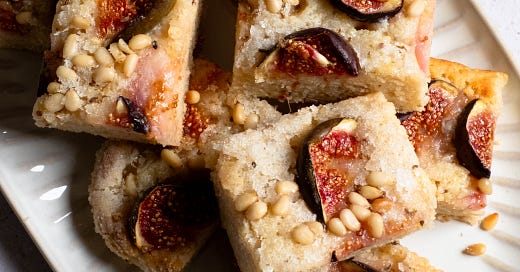A Fig, Anise Seed and Pine Nut Tarte au Sucre / Butterkuchen
featuring my favourite quick dough method
Hello, and welcome to Newsletter No 41 here on Substack! Thank you for stopping by. If you are already subscribed - THANK YOU! Seeing thousands of you read my newsletters each month means the world to me! And if you are not yet a subscriber, hit the link below if you are interested in recipes as well as tips and tricks to make the most of our increasingly eclectic pantries and a good dose of my at times random musings about all things food!
❤️ Also, did you know that if you hit the HEART at the top or bottom of this post, it makes it easier for people to find this newsletter? (And also puts huge smile on my face!)
After a summer spent mainly on the sofa on extended sick leave, about 10 days ago I finally got the all clear from my doctor to slowly start resuming normal activities - to return to work, to play with my toddler the way I am used to, to exercise, to travel and, most importantly, to get back into the kitchen. While I was stuck on the sofa I made a long list of exciting dishes …
Keep reading with a 7-day free trial
Subscribe to Real Simple Food to keep reading this post and get 7 days of free access to the full post archives.




